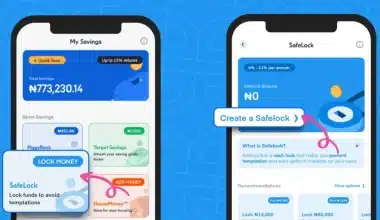Florida 1031 exchange serves as a tax deferral technique for real estate investors. This approach, also known as a like-exchange or a Starker exchange, allows you as an investor to trade in one or more properties for new ones without paying federal capital gains taxes at the time, as long as the exchange is done within a certain time frame. This year is an opportune year to explore a 1031 exchange. Because of the rise in real estate values above the levels of the previous year. We’ll go over all you need to know about Florida 1031 exchange rules, real estate, and timeline in this article.
What is 1031 Exchange Florida?
Florida is a prominent 1031 exchange market for real estate held for business or investment purposes. Atlas 1031 has long provided an Internal Revenue Service recognized tax deferral solution in Section 1.1031 of the IRS code to both domestic and non-citizen clients. When the replacement property is purchased within 180 calendar days of the sale of the old property. The federal and state capital gains and recaptured depreciation taxes can be postponed.
There are numerous strategic reasons to contemplate a 1031 exchange in Florida. This includes the fact that the state ranks second only to Alaska in terms of coastal miles, followed by California, Hawaii, Louisiana, and Texas. Along the Florida coastline, vacation rentals and investment property abound, making 1031 exchanges a popular option.
1031 Exchange Florida Timeline
The Exchangor has 45 days to nominate (identify) prospective replacement properties. This is when the surrendered property closes, and 180 days to acquire the replacement property. The exchange takes 180 days to complete, not 45 days plus 180 days.
1031 ExchanRules for Identification
Before midnight on the 45th day, as an Exchangor, you must offer a written “unambiguous description” of the proposed replacement property (after the close of the first relinquished property). A legal description or the address of the property will suffice. You must use one of the following guidelines if you want to find or buy several properties:
Choose up to three properties of any value that you want to buy at least one of them.
- Identify at least three properties with a combined worth of no more than 200 percent of the relinquished property’s market value.
- Identify at least three properties worth more than 200 percent of the relinquished property, with the understanding that 95 percent of the market value of all properties must be acquired.
- A purchase agreement that has been submitted is deemed adequate identification.
- Any property purchased and closed during the 45-day timeframe is considered an identification.
1031 Exchange Rules
Using a 1031 tax-deferred exchange necessitates planning ahead of time. The following are the three main 1031 exchange rules to follow:
#1. Replacement property rule of greater or equal value
To get the most out of a 1031 exchange, real estate investors should choose a replacement property or several replacement properties that are equivalent to or better in value than the one being sold. There are three options for doing so:
- Make a list of up to three properties, regardless of their worth, or
- Identify as many properties as you like, as long as the total worth of all of them does not surpass 200 percent of the property being replaced, or
- Identify as many homes as you like as long as the properties you buy are worth at least 95% of the ones you’re replacing.
#2. The dreaded 45-day identification window and how it pays to plan ahead
When completing a 1031 exchange, real estate investors must plan beforehand. Because the IRS only gives you 45 days to find a replacement property for the one you sold, you’ll need to act quickly. However, in order to receive the greatest deal on a replacement house, experienced real estate investors don’t wait until their current property has sold before beginning their search. Imagine calling a real estate broker with a property for sale and informing them that they only had two days to find a replacement. There’s a low to none chance of getting a good deal on the property.
#3. Replacement property might be purchased within a 180-day period.
The replacement property must be purchased and closed no later than 180 days after the current property was sold. Keep in mind that 180 days is not the same as six months. To calculate the 180-day period, the IRS counts each individual day, including weekends and holidays (including federal holidays).
#4. Mortgaged property in a 1031 exchange.
You can also do a 1031 exchange with real estate that has an existing mortgage. The replacement property’s mortgage must be equal to or greater than the mortgage on the property being sold. If it’s less, the difference is considered boot and is taxable.
1031 Exchange Florida Real Estate
In essence, a 1031 exchange rules allows a Florida real estate investor to postpone paying federal capital gains taxes. This would otherwise be due immediately upon the sale of a property by reinvesting the profit in a like-kind property of equal or greater value. ‘Like-kind’ means that the type or character of the property must be similar, regardless of the grade or quality of the properties concerned.
Aside from the obvious immediate benefit of deferring capital gains taxes, 1031 exchanges also allow investors to leverage their cash and increase their purchasing power. They could easily consolidate or diversify their portfolios, relocate their investments, and reduce management costs as well as duties by switching from high-maintenance to low-maintenance properties.
To complete a 1031 exchange, first identify the property you want to sell, often known as the surrendered property or downleg. When the property is sold, the funds are placed in escrow and managed by a professional mediator. As a result, they keep the monies are out of your bank accounts and are not subject to immediate capital gains taxation.
Understanding 1031 Exchange Florida Real Estate
You can identify the property or properties you want to purchase (called the upleg) with the proceeds of your downleg sale. However, if the total value is greater than the value of your downleg and you complete the exchange within the set time limits, you can buy the upleg property or properties without paying capital gains taxes on the downleg sale.
You will be taxed on the capital gains if the profits of the sale ever arrive into your bank account or are identified with your name, or if you do not complete the exchange within the time constraints. Because of the 1979 Starker vs. US court case, which shows that trading properties within a certain time period is legally treated the same as a simultaneous property ownership transfer. This form of trade is frequently referred to as a Starker exchange.
Property Types for a 1031 Exchange in Florida
The properties in the following list all have comparable intents and facts supporting the intent. This also includes satisfying the 1031 exchange rules. With facts such as holding times and minimal personal use excluding inventory, which is not eligible for 1031 consideration. If it was rented or in a rental pool, the intent is to hold the real property for investment or business use. Here are property types for a 1031 exchange in florida.
- Land
- Build on land that you already own.
- Businesses
- Strip malls and shopping malls
- Practice Ranges & Golf Courses
- Parks for trailers
- Self-storage options
- Interests in oil, gas, and minerals
- Ditch and Water Rights
- Parking Garages
- Condominiums
- Practices of Medicine and Dentistry
- Convenience Stores
- Commercial/Warehouse Structures
- Vacation Rentals
- Gas Stations
- Apartments
- Hotel and motel establishments
- Property Rentals
- Easements for Conservation
- Towers of Communication
- Nursing Homes
Common 1031 exchange In Florida.
A delayed exchange is the most popular type of 1031 exchange employed in Florida and around the country. This is the type of transaction, in which you sell your home first and then buy another, with a 45-day identification time and a 180-day completion period. However, there are three more forms of 1031 exchanges that are less common.
A reverse exchange is the polar opposite of a delayed exchange, as you might expect. You’d buy the replacement property first, then sell the one you’ve already given up. Because you must pay with cash only, and many banks will not lend money for reverse exchanges, this can be tough to pull off. However, if you have enough cash on hand, it is possible.
A simultaneous exchange necessitates the simultaneous closing of both the relinquished and replacement properties. Even if all events occur on the same day, a minor delay can invalidate the exchange, resulting in you being taxed on the entire sale price of your home.
Finally, a construction or improvement exchange permits you to develop the replacement property with profits from the sale of the surrendered property. While your certified intermediary retains the property deed in trust for up to 180 days. This form of exchange has additional restrictions.
Rules to Keep in Mind When Dealing with 1031 Exchange
When the profits from the sale of real estate is used to buy new real estate, 1031 exchanges allow real estate investors to postpone paying capital gains tax. To qualify for a 1031 exchange, investors must fulfill the steps outlined in the Internal Revenue Code:
- You must make use of the real estate for commercial or investment purposes.
- Within 45 days, You must discover and purchase a replacement property and within 180 days, a replacement property must be located and purchased.
- The difference between the replacement property’s worth and the surrendered property’s value is known as boot, and it is taxable.
- The Tax Cuts and Jobs Act of 2017 established Opportunity Zones, which provide additional tax-deferred investment options.
- Even if the property has a mortgage, 1031 exchanges can be employed.
- When real estate is passed on to heirs, accrued deferred capital gains tax can be totally eliminated with effective estate planning.
The IRS gives you an interest-free loan when you do a 1031 exchange. Rather than paying capital gains taxes, real estate investors may put that extra cash to work right away. By generating more current rental revenue and growing their property quicker than they might otherwise.
Frequently Asked Questions
How does a 1031 exchange work in Florida?
In essence, a 1031 exchange allows a Florida real estate investor to postpone paying federal capital gains taxes that would otherwise be due immediately upon the sale of a property by reinvesting the profit in a like-kind property of equal or greater value.
What is a 1031 exchange Florida real estate?
A 1031 exchange is a sort of transaction that allows an investor or property owner to sell their property and buy a similar property, such as Florida farms for sale.
Do I need a lawyer for a 1031 exchange?
You must engage a qualified intermediary (QI) to complete your 1031 exchange, according to IRS regulations. While an attorney can provide this service, it does not have to be an attorney, and it cannot be an attorney you have previously worked with.
Related Articles
- Property Valuation: How to Value Your Real Estate Investment & Properties.
- PROPERTY MANAGEMENT: Roles of Property Managers & Firms (+Top Software Picks
- Commercial Real Estate: Definition, Types, Companies & Best Investment Tips
- AVERAGE HOME INSURANCE COST: Best 2021 UK Practices and Rates (Updated)
- SMALL BUSINESS GRANTS FLORIDA: Top picks in 2021
- Florida Unemployment 2021: Overview, Application, and Benefits






